Overview
This article delves into the mastery of direct-to-consumer (DTC) strategies in the winery sector, a critical approach for achieving sustainable growth and enhancing customer engagement. Effective DTC sales are not merely beneficial; they can significantly elevate profit margins by cultivating direct relationships with consumers. This is achieved through personalized experiences, exclusive offers, and strategic capital planning, all of which culminate in increased brand loyalty and revenue.
By implementing robust DTC strategies, wineries can directly engage with their customers, fostering a deeper connection that drives loyalty and repeat business. The importance of personalized experiences cannot be overstated; they are essential for creating memorable interactions that resonate with consumers. Furthermore, exclusive offers serve as powerful incentives that not only attract new customers but also reward existing ones, reinforcing brand loyalty.
Strategic capital planning plays a pivotal role in this equation, allowing wineries to allocate resources effectively and maximize their DTC potential. This holistic approach ensures that every aspect of the consumer experience is optimized, leading to sustainable growth and enhanced profitability. In conclusion, mastering DTC strategies is not just an option; it is a necessity for wineries aiming to thrive in a competitive market.
Introduction
The wine industry is undergoing a seismic shift as wineries increasingly adopt direct-to-consumer (DTC) sales—a strategy that not only enhances profitability but also fosters deeper connections with consumers. By bypassing traditional distribution channels, wineries can cultivate brand loyalty and adapt to evolving consumer preferences for personalized experiences.
However, as competition intensifies and consumer behaviors evolve, wineries must consider:
- How can they effectively navigate the challenges of DTC sales to ensure sustainable growth and engagement in 2025 and beyond?
Understand Direct-to-Consumer Sales in the Wine Industry
Winery DTC sales in the wine sector represent a transformative approach, allowing producers to sell directly to customers and bypass traditional distribution channels. This model cultivates a direct relationship with customers, which is essential for enhancing brand loyalty and retention. As consumer preferences increasingly lean towards personalized experiences and compelling brand narratives, the DTC model has gained substantial traction, particularly with the strategic guidance of advisors like Enocap.
Winery DTC strategies can help wineries that effectively implement them realize higher profit margins by eliminating intermediaries and offering exclusive products directly to consumers. For instance, establishments that adapt to consumer preferences—such as customizable orders and enhanced tasting experiences—have reported average order revenue increases of up to 52%. In 2024, the average price per bottle shipped rose by 6%, reflecting a broader trend of premiumization in the market, even amidst declines in overall shipment volume.
Expert opinions underscore the importance of winery DTC sales for vineyards. With 27% of new wine club signups originating from digital channels, the emphasis on is unmistakable. Industry leaders assert that the downturn in DTC shipments is not solely attributable to challenges within the channel; rather, it mirrors broader economic and cultural shifts influencing consumer behavior. Additionally, strategic capital planning is crucial for vineyards to navigate these challenges adeptly, ensuring they can invest in the right resources to bolster their winery DTC.
The impact of winery DTC sales on vineyard profit margins is profound. By leveraging winery DTC channels and the strategic insights provided by Enocap, producers can enhance their profitability while addressing challenges such as declining visitation and evolving purchasing patterns. For example, establishments that have successfully transformed casual buyers into loyal club members through targeted marketing and personalized experiences have witnessed significant growth in their customer base. As the beverage industry evolves, the capacity to connect directly with consumers will be vital for sustainable growth and engagement in 2025 and beyond. Wineries must remain agile, adapting their strategies to meet the demands of a dynamic market landscape.
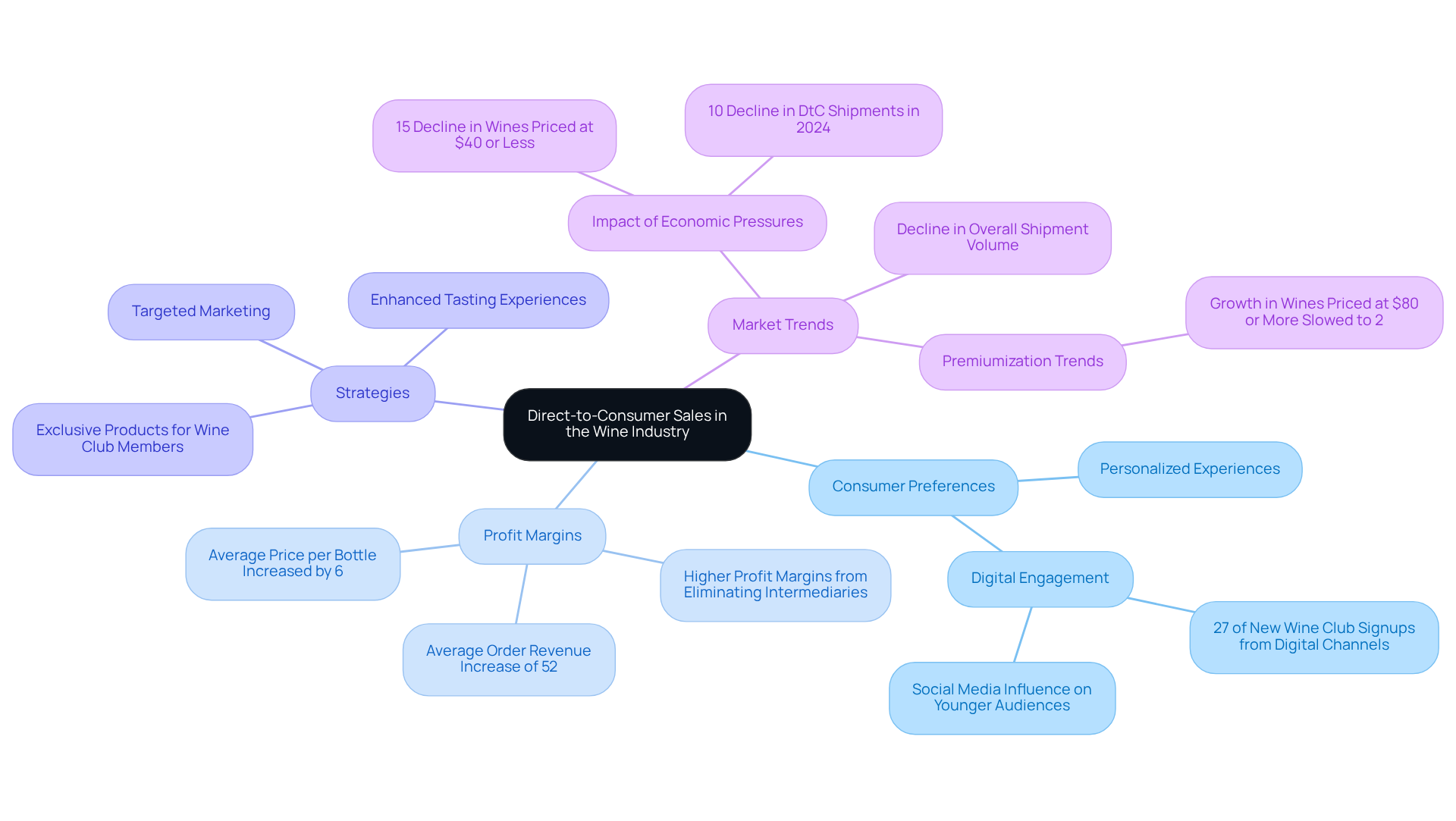
Build and Optimize DTC Sales Channels
To effectively build and optimize direct-to-consumer (DTC) sales channels, wineries must implement the following strategies:
- Develop an E-commerce Platform: Establish a user-friendly website that showcases your products and facilitates online purchases. Prioritize a mobile-friendly design and ensure the site is optimized for search engines to enhance visibility. Integrating strategic capital planning will further support your e-commerce initiatives.
- Utilize Social Media: Leverage the power of to promote your wines and share compelling brand narratives. Engage your audience through targeted advertising campaigns that drive traffic to your website and foster community interaction. As Will Di Nunzio, President of DVNO, aptly notes, "The personal touch is essential for comprehending your clients and responding to their needs."
- Implement Email Marketing: Build an email list of clients and prospects to deliver personalized offers, newsletters, and updates on new releases or events. This approach nurtures relationships and encourages repeat purchases, transforming casual buyers into loyal club members.
- Create Exclusive Offers: Design exclusive products or limited-time promotions tailored specifically for your direct-to-consumer audience. Consider special wine club memberships, unique tasting events, or early access to new releases from the winery DTC to enhance client loyalty.
- Optimize Customer Experience: Ensure a seamless purchasing journey from browsing to checkout. Deliver outstanding client service and follow up with clients post-purchase to collect feedback, which can assist in refining your offerings and promoting repeat business. The transition to platforms such as Wine Hub has illustrated that efficient customer support and technology integration are crucial for managing relationships and improving the overall customer experience, ultimately contributing to the sustained success of family-owned vineyards.
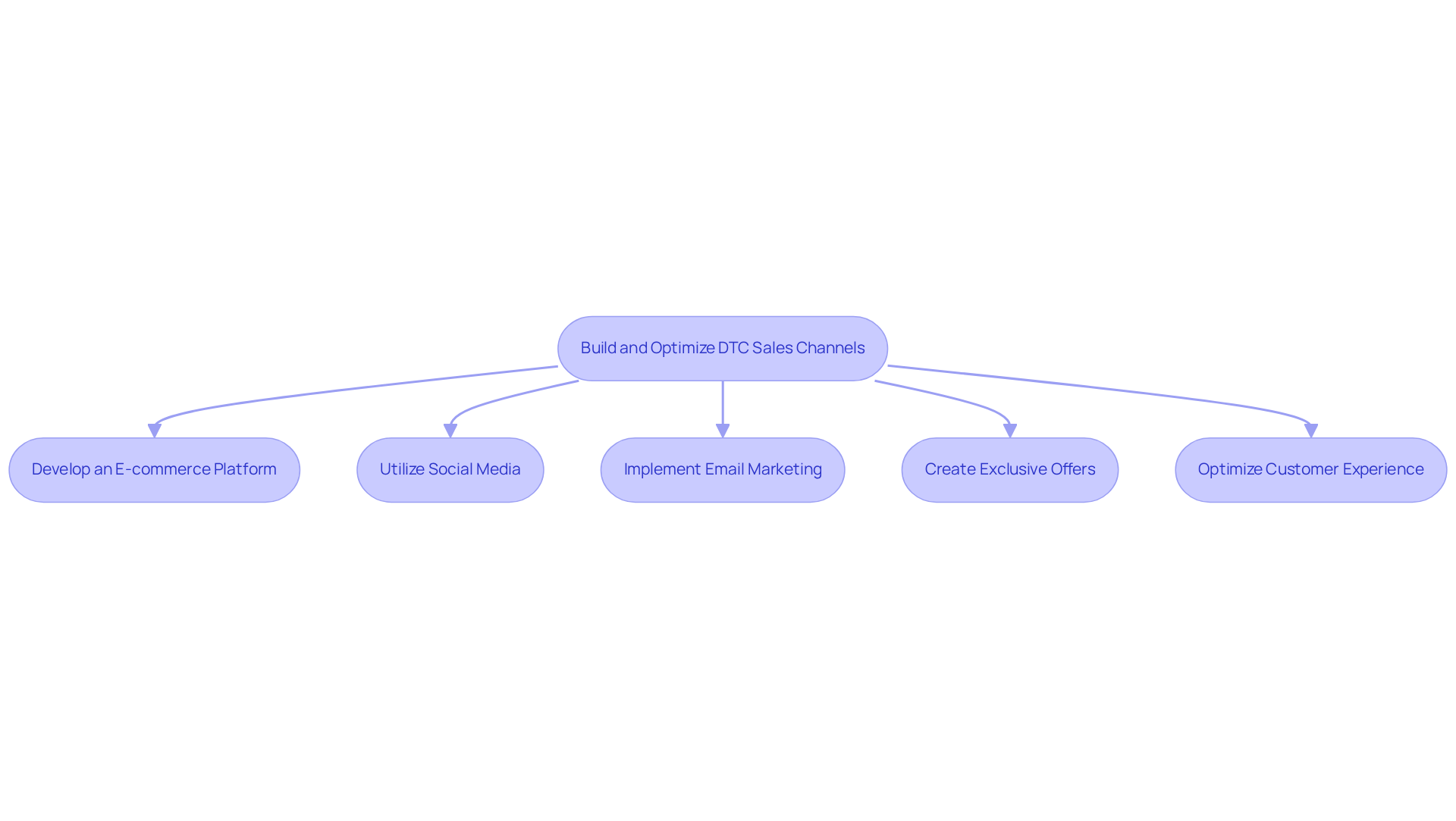
Enhance Wine Club Membership and Retention Strategies
To enhance wine club membership and retention, wineries must adopt that resonate with their audience.
- Personalized Communication is essential. By customizing communication to individual participants based on their preferences and purchase history, wineries can leverage data analysis to understand participant behavior. This targeted strategy not only delivers tailored offers but also recognizes that 27% of new club signups originate from digital channels. Such personalization significantly enhances the overall experience and drives winery DTC revenue.
- Exclusive Benefits play a pivotal role in fostering loyalty. Offering distinctive perks, such as discounts, early access to new releases, and invitations to exclusive events, cultivates a sense of inclusion and importance among participants. Additionally, acknowledging the growing trend towards customizable subscriptions—especially among younger beverage enthusiasts—can further elevate satisfaction and loyalty.
- Engaging Experiences are vital for deepening connections. Organizing exclusive events like private tastings, vineyard tours, or winemaker dinners not only strengthens the bond with the brand but also enhances loyalty among participants. The current market trend underscores the importance of personal relationships and engaging experiences, making these events crucial for converting casual buyers into dedicated club members.
- Regular Feedback is indispensable. Actively seeking input from participants through surveys or direct communication allows wineries to understand their needs and preferences better. This feedback loop is essential for adapting to evolving expectations and ensuring sustainable growth.
- Retention Programs are key to rewarding loyalty. Implementing programs that offer additional benefits or recognition—such as loyalty points, milestone rewards, anniversary gifts, or special acknowledgments in newsletters—can significantly enhance the member experience in winery DTC and encourage continued membership. Furthermore, considering a flexible payment system and simplifying the buyer journey will improve customer experience and loyalty, aligning with strategic capital planning for family-owned businesses.
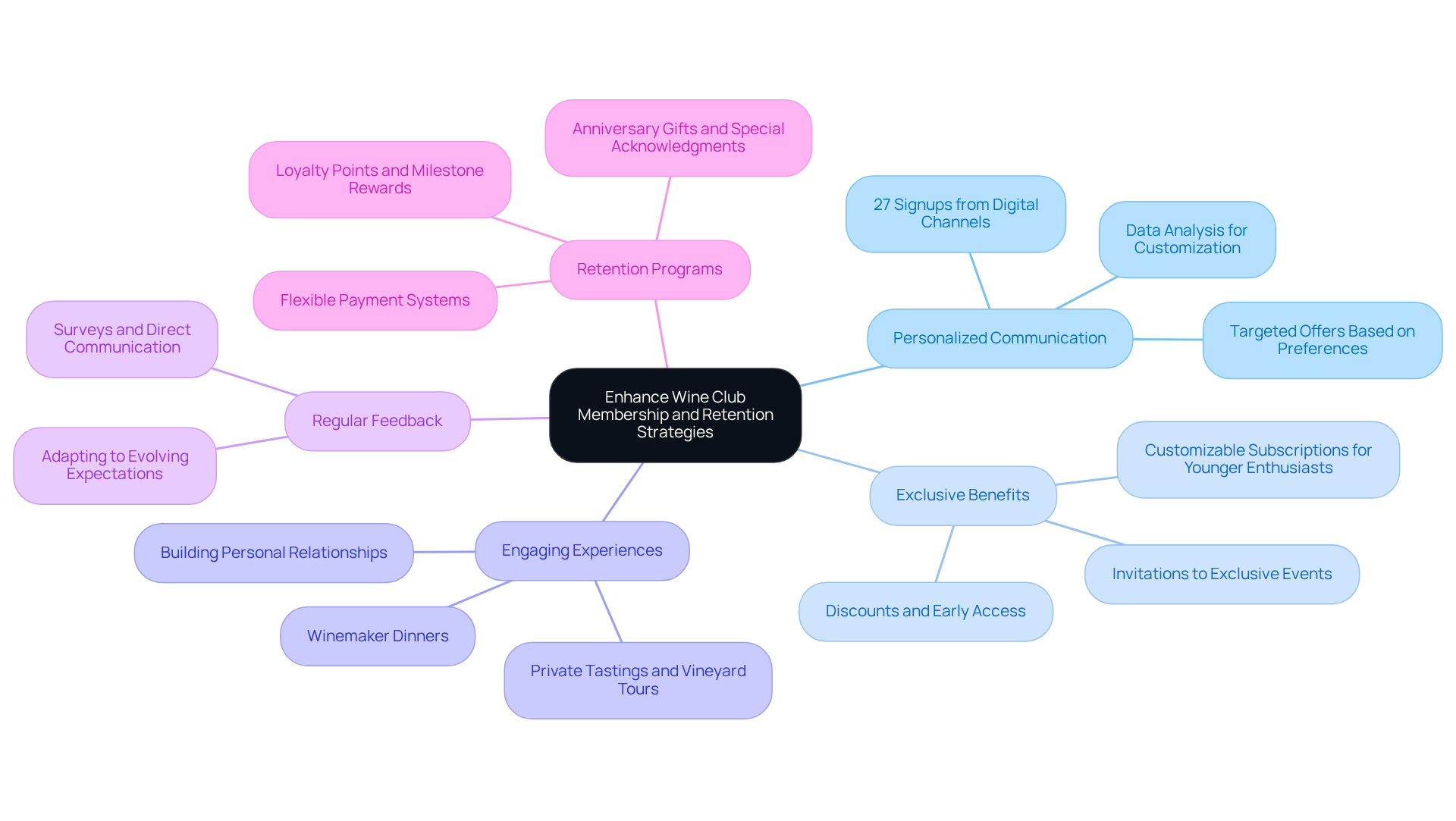
Leverage Storytelling to Strengthen Brand Identity
To leverage storytelling effectively, wineries should:
- Craft a Compelling Brand Narrative: Develop a narrative that encapsulates the establishment's history, values, and unique selling propositions. This narrative must be seamlessly integrated into all marketing materials, from labels to social media posts, ensuring a consistent message. Enocap specializes in helping wineries craft these narratives, which can significantly enhance winery DTC engagement and drive sales.
- Engage with Authenticity: Share genuine stories about the individuals behind the beverage, the vineyard's journey, and the winemaking process. Authenticity resonates deeply with consumers, fostering trust and loyalty. As Rob McMillan notes, "Story is very important. That’s how people remember wines. If you tell them the story of a family or area, it’s way more likely to stick." Enocap's approach emphasizes the importance of these authentic connections in transforming casual buyers into loyal club members.
- Utilize Visual Storytelling: Incorporate engaging visuals, such as videos and high-quality images, to enhance the storytelling experience. Visual content captures attention and conveys emotions more effectively than text alone, making the narrative more impactful. This strategy is vital for and enhancing client loyalty.
- Promote User-Generated Content: Invite patrons to share their own stories and experiences with your products. This approach not only builds a sense of community but also provides social proof, which can attract new customers and enhance brand credibility. According to industry experts, consumers increasingly seek personalized wine pairing experiences, making user-generated content even more valuable. Enocap assists vineyards in leveraging this content to enhance their brand narrative.
- Integrate Storytelling Across Channels: Ensure that the brand narrative is consistent across all marketing channels, including the website, social media, and email campaigns. Consistency reinforces brand identity and helps consumers connect with the brand on multiple levels, ultimately driving engagement and loyalty. Notably, Enocap's clients experienced an average e-commerce growth of 191% in 2020, highlighting the effectiveness of cohesive storytelling in driving sales.
- Strategic Capital Planning: In addition to storytelling, vineyards should consider strategic capital planning to support their growth initiatives. This involves identifying opportunities for debt, equity, or acquisition that align with the establishment's narrative and long-term vision. Enocap aids vineyards in connecting with suitable partners and funding, ensuring that their storytelling initiatives are supported by robust financial strategies.
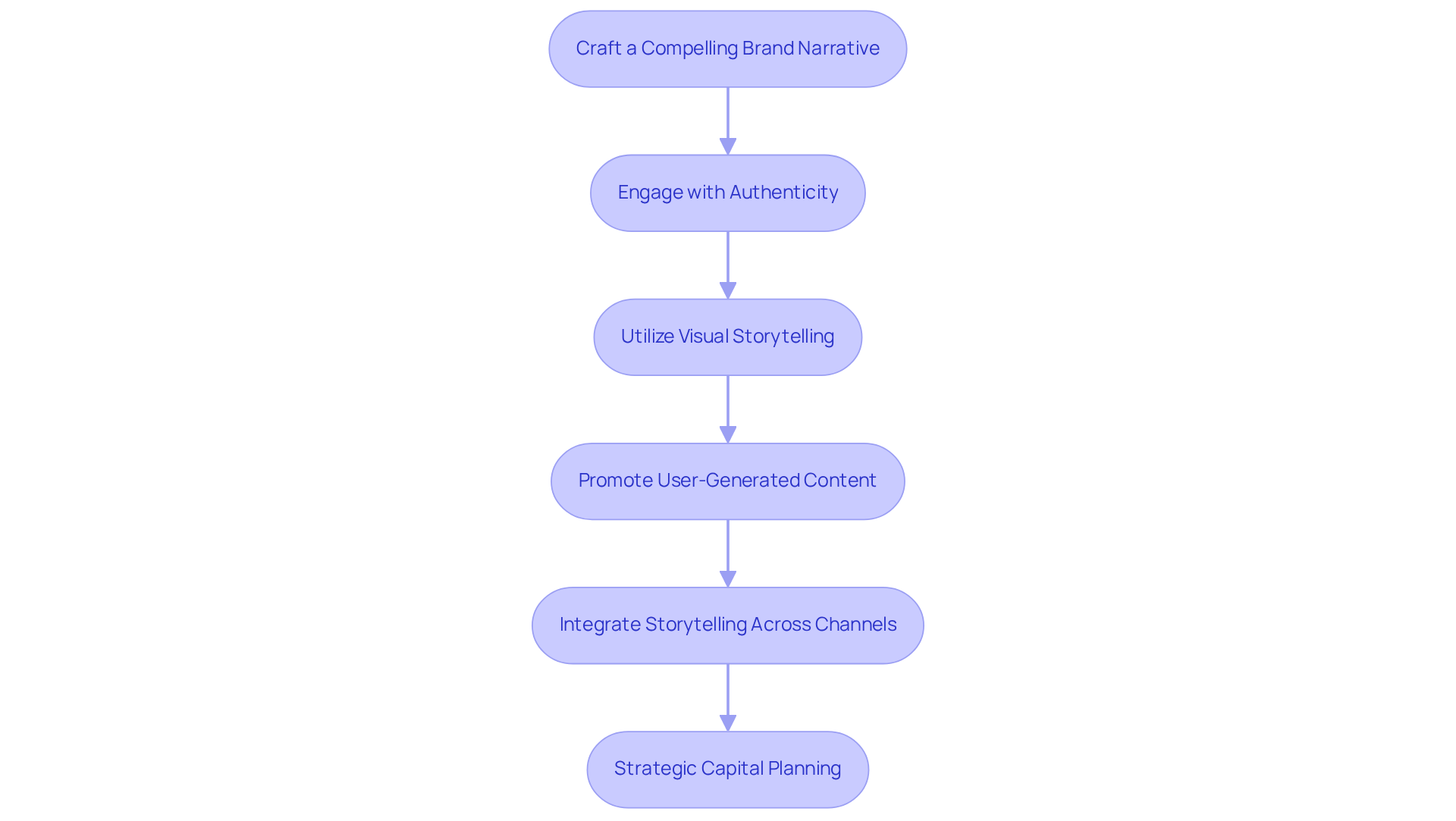
Implement Strategic Capital Planning for Sustainable Growth
To implement effective strategic capital planning, wineries must adhere to these essential steps:
- Assess Financial Needs: Initiate a comprehensive evaluation of current financial resources alongside future requirements. It is vital to identify specific areas where additional capital is necessary for growth, marketing initiatives, or operational enhancements. Enocap specializes in pairing family-owned vineyards with suitable partners and funding, ensuring that financial requirements are addressed efficiently.
- Explore Funding Options: Investigate a diverse range of funding avenues, including loans, equity financing, and grants. Each option presents unique advantages and challenges, making it crucial to select the one that aligns best with the establishment's objectives. Enocap's strategic capital planning services can help identify the most suitable funding options for sustainable growth.
- Develop a Financial Plan: Formulate a detailed financial plan that outlines anticipated revenues, expenses, and cash flow. This plan should encompass both short-term and long-term financial goals, along with strategies for achieving them. Enocap aids wine producers in crafting engaging narratives that resonate with consumers, which can enhance revenue generation and support financial planning.
- Monitor Financial Performance: Regularly assess financial performance against the established plan. Utilize key performance indicators (KPIs) to gauge progress and make necessary adjustments to stay on track. Enocap's performance analysis services can provide insights into financial health and growth opportunities.
- Engage with Financial Advisors: Collaborate with financial advisors who specialize in the wine sector. Their expertise can provide valuable insights and assist in navigating complex financial decisions, ensuring that businesses are well-positioned for sustainable growth. Enocap's advisory services are tailored to help family-owned vineyards flourish by unlocking winery dtc revenue and securing the appropriate capital.
The beverage industry currently faces challenges such as generational changes and heightened competition, making and strategic capital management even more essential for family-owned vineyards striving to succeed in a competitive environment. As WineAmerica states, "The wine industry generates sizeable tax revenues on the local, state, and national levels," underscoring the importance of effective financial strategies.
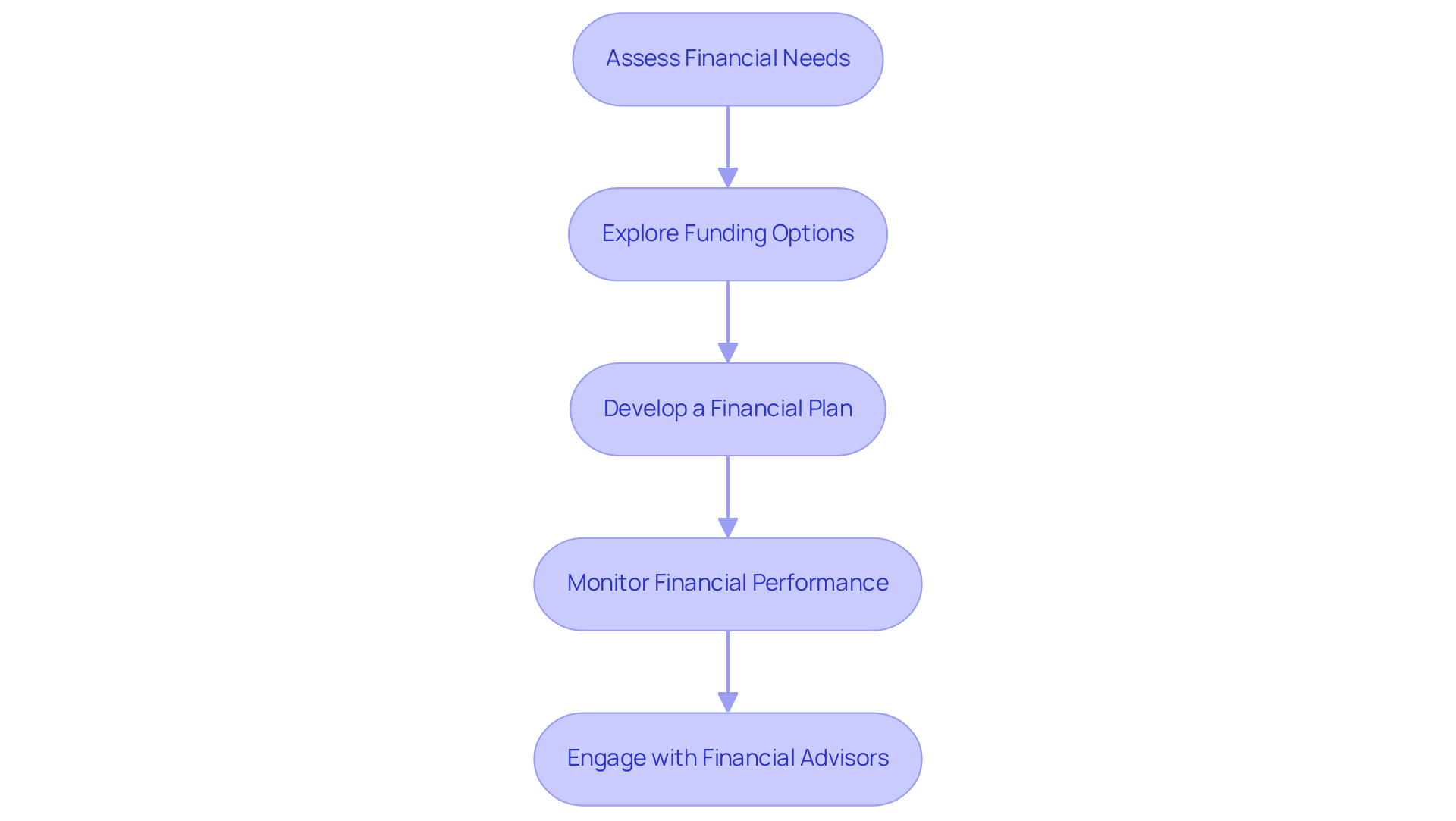
Conclusion
The direct-to-consumer (DTC) sales model signifies a pivotal transformation in the wine industry, empowering wineries to forge meaningful relationships with customers and enhance brand loyalty and retention. As consumer preferences shift towards personalized experiences and compelling narratives, the necessity of adopting effective DTC strategies becomes increasingly evident. Wineries that embrace this model stand to improve their profit margins by eliminating intermediaries while creating unique offerings that resonate with their audience.
Key insights highlight the critical need for building robust DTC sales channels through:
- e-commerce optimization
- social media engagement
- personalized email marketing
By fostering exclusive wine club memberships and leveraging storytelling to reinforce brand identity, wineries can convert casual buyers into loyal customers. Furthermore, strategic capital planning is essential for navigating the challenges of a competitive market and ensuring sustainable growth.
In a rapidly evolving landscape, the ability to connect directly with consumers is crucial for wineries pursuing long-term success. By embracing innovative strategies and prioritizing customer engagement, wineries will not only enhance profitability but also cultivate a vibrant community around their brand. As the wine industry continues to evolve, focusing on DTC sales and nurturing customer relationships will be paramount in driving growth and maintaining relevance in 2025 and beyond.
Frequently Asked Questions
What is direct-to-consumer (DTC) sales in the wine industry?
DTC sales in the wine industry allow wineries to sell directly to customers, bypassing traditional distribution channels. This approach fosters direct relationships with consumers, enhancing brand loyalty and retention.
What are the benefits of implementing winery DTC strategies?
Effective winery DTC strategies can lead to higher profit margins by eliminating intermediaries and offering exclusive products directly to consumers. Wineries that adapt to consumer preferences may see significant increases in average order revenue.
How has the market for DTC wine sales changed recently?
In 2024, the average price per bottle shipped rose by 6%, indicating a trend towards premiumization, despite a decline in overall shipment volume. Additionally, 27% of new wine club signups are now coming from digital channels.
What challenges do wineries face in the DTC sales channel?
The downturn in DTC shipments is influenced by broader economic and cultural shifts affecting consumer behavior. Wineries must engage in strategic capital planning to navigate these challenges effectively.
How can wineries enhance their profitability through DTC sales?
Wineries can enhance profitability by leveraging DTC channels and utilizing strategic insights to address challenges such as declining visitation and changing purchasing patterns. Targeted marketing and personalized experiences can help convert casual buyers into loyal club members.
What strategies should wineries implement to optimize their DTC sales channels?
Wineries should develop a user-friendly e-commerce platform, utilize social media for promotion, implement email marketing, create exclusive offers, and optimize the customer experience to enhance their DTC sales.
Why is a mobile-friendly e-commerce platform important for wineries?
A mobile-friendly e-commerce platform is essential for facilitating online purchases and enhancing visibility through search engine optimization, making it easier for customers to browse and buy wines.
How can social media be utilized in DTC sales?
Wineries can use social media to promote their wines, share brand narratives, and engage with their audience through targeted advertising campaigns that drive traffic to their website.
What role does email marketing play in DTC sales?
Email marketing allows wineries to build a list of clients and prospects, delivering personalized offers and updates that nurture relationships and encourage repeat purchases.
How can wineries improve customer experience in DTC sales?
Wineries can improve customer experience by ensuring a seamless purchasing journey, providing excellent client service, and following up post-purchase to gather feedback for refining their offerings.




